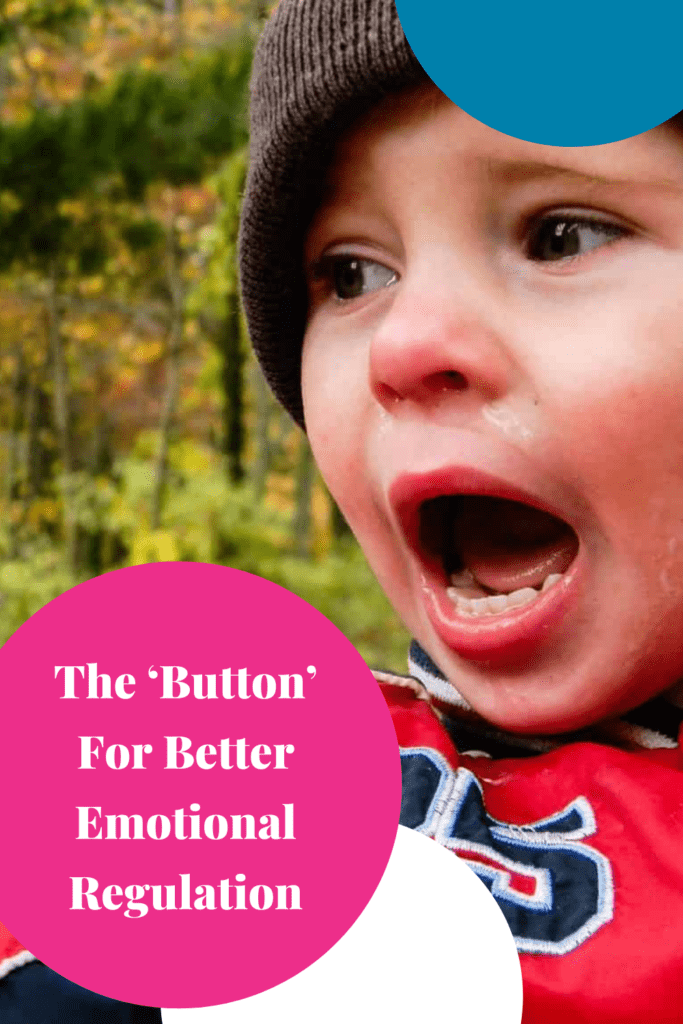There are no bad kids. Don’t worry. I’m not going to say that part about bad parents.
What I have learned from working with even the crankiest, toughest, most difficult kids is that kids don’t want to be ‘bad’.
There Are No Bad Kids
They don’t want their teacher to hate them or to disappoint their parents. There is something inside of them that has such a hard time with managing their emotions.
On good days, you have likely seen it in your child. They might be about to fly off then handle but then they keep their cool.
When Your Child Can’t Calm Down
When your child has trouble with tantrums, meltdowns or emotional regulation, it’s not that they are trying to make your life miserable. It’s that they can’t self-regulate or bring themselves back once they are set off.
There are several reasons for this, but today I want to talk about the first reason I address after we have looked at bio-chemical factors like nutrition.
So let’s start talking about basic brain development to really understand what is going on…
The Two Brain Hemispheres
The brain has two hemispheres which are joined by a bundle of nerves called the corpus callosum. A well-developed healthy corpus callosum is a thick bundle of nerves that joins or acts as a bridge between the two hemispheres so that information can easily pass from one side of the brain to the other.
Bridge or Barrier to Learning
When the corpus callosum is underdeveloped, the band is thin and acts as a barrier rather than a bridge. It is harder for information to be transferred from one hemisphere to the next.
The corpus callosum can be underdeveloped and lack connections due to toxins as well as from skipping or moving too quickly through certain developmental milestones like crawling.
Left and Right Brain Functions
Doctor Roger Sperry, Nobel Prize winner, discovered that the left and right sides of the brain had separate functions.
The right side of the brain controls the left side of the body. People who are more ‘right brained’ tend to be visual, creative and holistic thinkers.
The right brain is:
- Creative & imaginative
- Intuition
- Visual
- Holistic thinking
- Artistic
- Uses non-verbal cues
- Emotional
The left side of the brain controls the right side of the body. People who are more ‘left brained’ tend to be more academic and logically minded.
The left brain is:
- Verbal
- Analytical
- Order & Organization
- Reading & Writing
- Calculations & Sequencing
- Logic
- Thinks in words
- Linear thinking
The corpus callosum has two purposes:
1) To act as a bridge for information to pass between the two hemispheres.
2) To serve as a filter to inhibit excess information or activity from the other side. Think of a child who is really upset.
Since the right side of the brain is responsible for emotions, and the left is more logical, then the filtering process will help to prevent the right brain from ‘over-activating’. This is where the filter will kick in and activate the left side of the brain which allows for more rational processing.
Enter Emotional Regulation
This is what we call emotional regulation. This is just one example of how the corpus callosum works to balance the two brain hemispheres.
In my next article, I will talk about how to strengthen a weak corpus callosum and how it can be the main reason you child is working too hard to learn. When these two brain hemispheres are balanced children can optimally manage their emotions and learn.
To learn more about how you can help your child rise above learning and behaviour difficulties, schedule a free twenty-minute consult so I can help you identify the main reasons why your child is struggling with learning, reading and behaviour.
